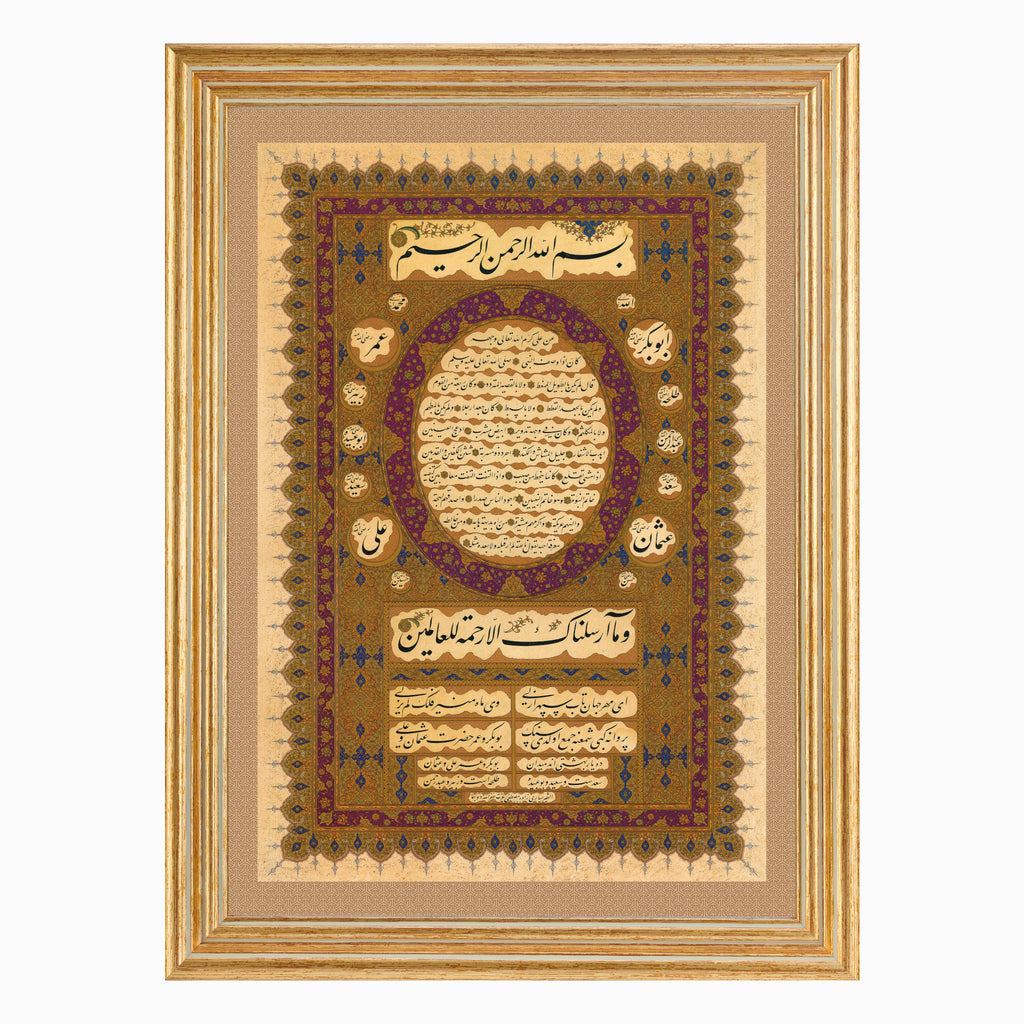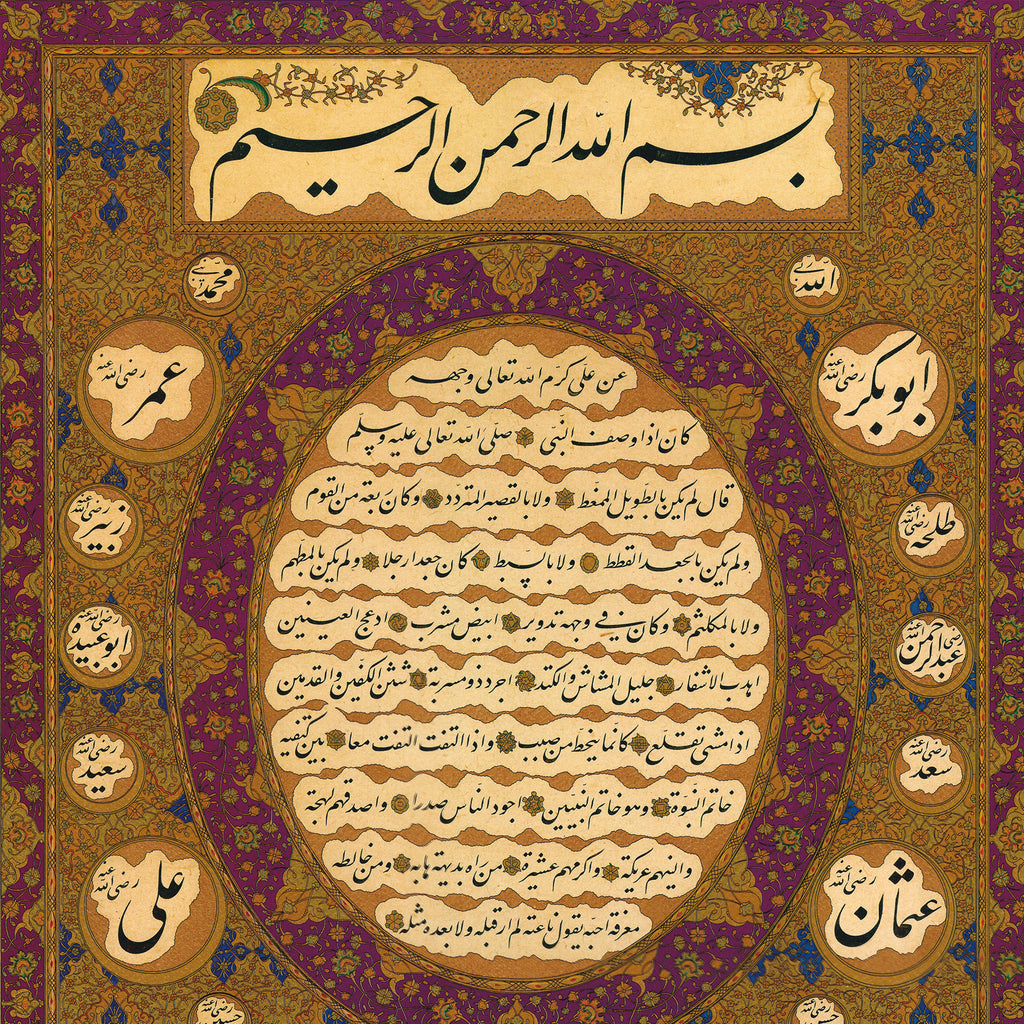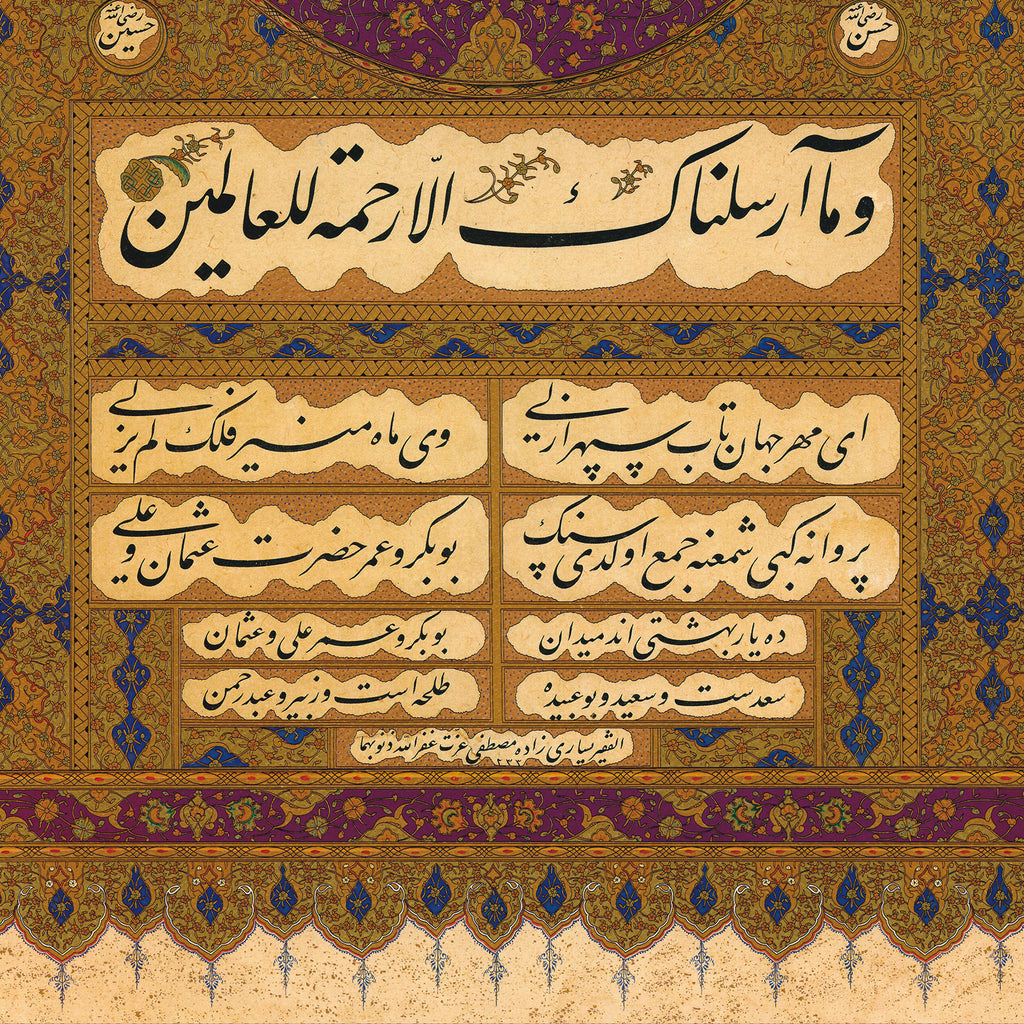Hilye panel Yesarizade Mustafa Izzet Efendi
On the Throne of the revolving spheres, you see his place assigned; On the base of the Divine Throne you see his name ﷺ!
(Sinai)
Rumi's Garden is proud to present a reproduction of traditional Islamic Ottoman hilya composed by the master calligrapher Yesarizade Mustafa Izzet Efendi in nastaliq script. The original hilya was created in 1830. The hilya is a description of the Prophet Muhammad ﷺ that would be written in beautiful Arabic calligraphy in order to be put up in homes, mosques, and businesses as a talisman for protection.
Centered and written in a cream top cloud band is the Basmala; In the name of God, the Most Gracious, the Most Merciful. It is ornate with gold and blue floral designs which establish the illumination theme for the hilya.
In the central circular is the famous description of Prophet Muhammad ﷺ as reported by his son-in-law, Ali ibn Abi Talib:
The Prophet was neither excessively tall nor extremely short. He was of medium height. His hair was neither curly nor wavy. It was not too curly nor was it straight. It was both curly and wavy. His face was not swollen or meaty. It was fairly round. His mouth was white. He had black eyes that were large with long lashes. His joints were rather large. He had little hairs that stood up, extending from his chest down to his navel, but the rest of his body was almost hairless. He had thick palms and thick fingers and toes. When walking, he lifted his feet off the ground as if he were walking in muddy water. When he turned, he turned completely. The Seal of Prophethood was between his shoulders. That was the sign of the fact that he was the last Prophet.
A wonderful feature of the hilya are the names of The Ten to Whom Paradise was promised (العشرة المبشرون) according to Sunni hadith literature. The names include the four Rashidun caliphs Abu Bakr (c. 573–634), Umar (c. 596–644), Uthman (c. 576–656), and Ali (c. 600–661), as well as the members of the committee (shūra) that elected Uthman as caliph, i.e., Talha (c. 593–656), Zubayr (born c. 592–602, died 656), Abd al-Rahman ibn Awf (c. 577–c. 652), and Sa'd ibn Abi Waqqas (born c. 600, died c. 670–678). Finally Sa'id ibn Zayd (c. 600–670/671) and Abu Ubayda ibn al-Jarrah (c. 581–639) are included. The names Allah, Muhammad, Hassan, and Hussain are also written.
To execute a hilya in fine calligraphy was considered a work of great merit amongst the Ottoman: one Turkish woman, widowed and childless, said she regarded the nine hilya's she had completed during her lifetime as a substitute for nine children, hoping that they would intercede for her at Doomsday.
Yesarizade Mustafa Izzet Efendi's date of birth is unknown but is assumed to be in the 1780s. He was born in Istanbul and was the son of the calligrapher, Mehmed Esad Yesari. After studying calligraphy with his father, he served as a Kazasker of Rumelia. Mustafa became one of the most important calligraphers of his time and taught students at the Imperial Court. His father had developed a unique style of ta'liq script called nesta'lik, which was based on elements from the Persian master, Mir Emad Hassani combined with stylistic elements developed by Mehmed Esad Yesari (Yesarizade's father). Yesarizade Mustafa Izzet built on changes made by his father, making further improvements and elaborating the rules for the method. This new style was called jali ta'liq and was much better suited to Ottoman tastes. His version of the script remains largely unchanged and has been passed down to the modern-day. He died on 23 June 1849 and was buried near the Fâtih madrasah, next to his father.
Details of the hilya by Yesarizade Mustafa Izzet Efendi
۩ Country of Origin: Ottoman Turkey
۩ Time Period: 1830
۩ Artist: Yesarizade Mustafa Izzet Efendi
۩ Size: Approximately 46 x 34 cm (including frame)
۩ Print: High-quality matte print and detail finishings
۩ Frame: Wood frame with a gold finish



